| |
| | |
|
|
Ubiquitous Computing
How to make the computer invisible?
|
| | |
Ubiquitous Computing
 Ubiquitous Media Ubiquitous Media
 Hybrary - Hybrid Library Hybrary - Hybrid Library
 Museum Technology Museum Technology
 Pervasive Gaming Pervasive Gaming
 Color Quantization Color Quantization
 Image Compression Image Compression
 Quality of Service Quality of Service
 Intelligent Internet Services Intelligent Internet Services
 Seamless Media Adaptation Seamless Media Adaptation
 Supervised Theses Supervised Theses

|
The term Ubiquitous Computing or Ubicomp was coined by Mark Weiser from the XEROX PARC research institute in the late 80s.
In the vision of Weiser, computing becomes omnipresent and invisible at the same time.
This paradoxon can be solved by embedding computational devices into everyday objects
allowing for natural interaction with computational services in an intelligent environment.
The focus of my Ubicomp research project is to explore possibilities for context-aware mobile services.
Some prototype projects (Cyberlounge, Aladin, Tourguide, EyeJot, LabScape, SmartParty) have been developed
as student projects within my Ubiquitous Computing lecture, performed at the ISNM since 2003.
In cooperation with the Open University of the Netherlands, Campus Memories has been developed to
support context-aware mobile learning. The OCEAN framework has been published within the PhD of
Darren Carlson and is currently under implementation development.
Most of the projects have been published at International Conferences and Journals.
|
| | |




|
 CyberLounge CyberLounge
How to meet virtually on the campus?
CyberLounge is a virtual meeting place within a learning environment and space conceptualised at the ISNM in Luebeck, Germany
by participating students of the Ubiquitous Computing course in 2003.
CyberLounge provides a flexible approach for improving communication and information management,
allowing the automatic location tracking of students and campus objects. CyberLounge reveals the users' presence and position,
as well as other information such as their schedules and preferences.
|
| | |


|
The Cyberlounge was presented in the Art Exhibition "Aussichten - Einsichten" (Outsights - Insights)
in the
 St. Petri
Church in Lübeck from Jan. 4th - Feb. 6th, 2004. St. Petri
Church in Lübeck from Jan. 4th - Feb. 6th, 2004.
For a short impression of the demo start this
 Flash Animation. Flash Animation.
|
| | |


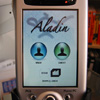

|
 ALADIN ALADIN
How to support mobile context-awareness?
ALADIN - The ghost of the wonderlamp - is a mobile ubiquitous computing environment started as a Master Thesis at
the ISNM in 2004. Users are equipped with mobile devices that
are able to scan their location by using Infrared, Bluetooth and RFID location tracking techniques. Authentication is realized using
biometric access methods. The context information (user, location, objects) triggers a list of context-based services to be
available. These services can be customized and tailored to the specific needs and requirements of the respective context spot.
The ALADIN infrastructure can be used for many different applications, like mobile tour guides, interactive mobile cinema,
pervasive games and many more.
Currently, we are expanding the ALADIN infrastructure to mobile devices running Android operating system within the SmartAssist
research project.
|
| | |

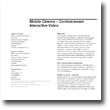
|
Details about the ALADIN system can be found in:
Andreas Schrader, Darren Carlson and Dominik Busch:
Mobile Cinema – Context-aware Interactive Video
International Conference on Human Factors in Computer Systems
( CHI'2006),
Workshop: Investigating new user experience challenges in iTV:
mobility & sociability, Montreal, Canada, April 22, 2006. CHI'2006),
Workshop: Investigating new user experience challenges in iTV:
mobility & sociability, Montreal, Canada, April 22, 2006.
Download paper at  CHI2006
CHI2006
|
| | |


|
Andreas Schrader, Darren Carlson and Dominik Busch
Modular Framework Support for Context-aware Mobile Cinema
 Springer Journal on Personal and Ubiquitous Computing
Springer Journal on Personal and Ubiquitous Computing
Special issue on mobility and sociability for interactive television, February 22, 2007.
|
| | |

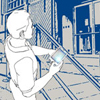
|
TourGuide
How to find your way in a building?
The ISNM Tour Guide is an example service instantiation of the ALADIN mobile service infrastructure. It was developed in the context
of the Ubiquitous Computing course in 2004. The system guides visitors, guests and staff at the Lübeck MediaDocks through the
building and offers various helping functionalities. By using a mobile PDA equipped with Infrared and RFID location tracking systems
as well as Wireless LAN connections, users can get the location of offices, can leave messages for other users, and can even
'look through walls'. Beside the general concept, a first version of the graphical user interface has been designed during the
Digital Film and Video Development course in summer 2004.
|
| | |

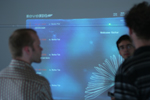
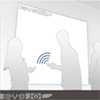

|
 EyeJOT EyeJOT
How to support mobile communities?
eyeJOT is an interactive community bulletin system based on ubiquitous computing technologies and has been developed within
the Ubiquitous Computing course project at the ISNM in 2006.
Campus users can access typical campus information, like news, activities and a semester schedule.
eyeJOT uses a combination of Bluetooth and SMS together with a new navigation metaphor combining distance and time.
The multi-layer structure of the eyeJOT implementation allows for separation of hardware, application and graphical design
and is based on Microsoft .NET, PhP and MySQL.
|
| | |

|
Details about the eyeJOT system can be found in:
Bashar Al Takrouri, Antonio Canonico, Layda Gongora, Michal Janiszewski, Claudiu Toader and Andreas Schrader:
eyeJOT - A Ubiquitous Context-aware Campus Information System
The Second International Conference on Pervasive Computing and Applications
( ICPCA'2007).
July 26-27, 2007, Birmingham, UK. ICPCA'2007).
July 26-27, 2007, Birmingham, UK.
|
| | |

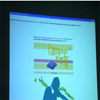

|
 SmartParty SmartParty
How to get your favorite music on a party?
SmartParty is a pervasive music system based on RFID and virtual jukebox and has been developed within
the Ubiquitous Computing course project at the ISNM in 2006.
The Smart Party system allows for an automatic song selection based on visitor preferences of a smart campus party.
Music sharing has become commonplace on the Internet based on audio compression. Web 2.0 supports user collaboration
in a plethora of new dynamic web services. Virtual jukeboxes have been developed bases on automatic playlists and
music databases. But how to integrate all that into the social space of a party?
SmartParty uses pervasive technology (RFID and wireless networks) to detect visitors and adjust the current playlist
according to their pre-selected preferences. Parties are finally democratized, no need for hijacking the DJ booth anymore.
|
| | |


|
The SmartParty system has been demonstrated at:
Evgenia Nikolova, Haneen Tamari, Ankit Saha and Andreas Schrader:
Pervasive Campus: Smart Party
( reActor2):
The Second International Conference on Digital Live Art, Broadcast House, Leeds Met University, UK, September 10, 2007. reActor2):
The Second International Conference on Digital Live Art, Broadcast House, Leeds Met University, UK, September 10, 2007.
|
| | |




|
 LabScape LabScape
How to realize passive surveillance?
In public spaces, active surveillance systems are constantly growing and city-wide observation systems for tracking
suspect persons are supported by the police and the government in order to prevent crime and terror.
From our point of view, the availability of pervasive, unobtrusive tracking technology, ubiquitous computing infrastructure
and new enhanced digital media interfaces can be used to realize a more passive surveillance, which protects the privacy of
individuals and uses abstraction and anonymisation to realize an ambient awareness system for campus activities.
The LabScape project uses organic design metaphors in terms of a Lindenmeyer tree algorithm to map sensor data
to real-time generated graphics. An increased level of ambient awareness is reached without violating pricacy.
The project has been developed within the Ubiquitous Computing course project at the ISNM in 2006.
|
| | |


|
The LabScape system has been demonstrated at:
Luis Bustamante, Mantas Talmantas, Rangga Winantyo and Andreas Schrader:
LABSCAPE - Organic Landscape for Ambient Awareness in Campus Laboratories
( MindTrek'2007):
1st Workshop on Ubiquitous Media Entertainment Technology at MindTrek'2007, October 2, 2007. MindTrek'2007):
1st Workshop on Ubiquitous Media Entertainment Technology at MindTrek'2007, October 2, 2007.
|
| | |


|
 OCEAN OCEAN
How to realize the Internet of Things?
The rapid expansion of networked computation into our everyday lives often results in physical environments
with an increased potential for Ubicomp support. Often times, however, Ubicomp support is underutilized due to the nature
of many real-world networked resources; which are often highly heterogeneous, unsystematically organized,
unpredictably available and not inherently interoperable. To overcome these challenges, the ISNM Ambient Ocean project
(Ocean) is exploring novel ways of harnessing the collective wisdom of users operating within these complex environments.
In Ocean, we assume networked resources will rarely provide a means for deploying heavyweight Ubicomp software components.
Rather, we are developing a plug-in-centric, smart-client framework which enables appropriate client components to be
installed on-demand; including plug-ins for context detection, resource control, protocol adaptation and collaborative
filtering. We hypothesize that plug-in-based extensibility combined with community-based collaborative filtering will help
improve and simplify adhoc compositions of potentially powerful ambient resources.
|
| | |
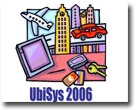

|
The OCEAN concept has been presented at:
Darren Carlson and Andreas Schrader:
Ocean: Simplifying Real World Ubicomp
Workshop on System Support for Ubiquitous Computing
( UbiSys'2006)
at the 8th Annual Conference on Ubiquitous Computing (Ubicomp 2006), UbiSys'2006)
at the 8th Annual Conference on Ubiquitous Computing (Ubicomp 2006),
Orange County, California, USA, September 17-21, 2006.
|
| | |
|
|
See also Dissertation thesis of Darren Carlson:
Ocean: Towards Web-scale Context-aware Computing
University of Lübeck, 2009.
|
|
|
|